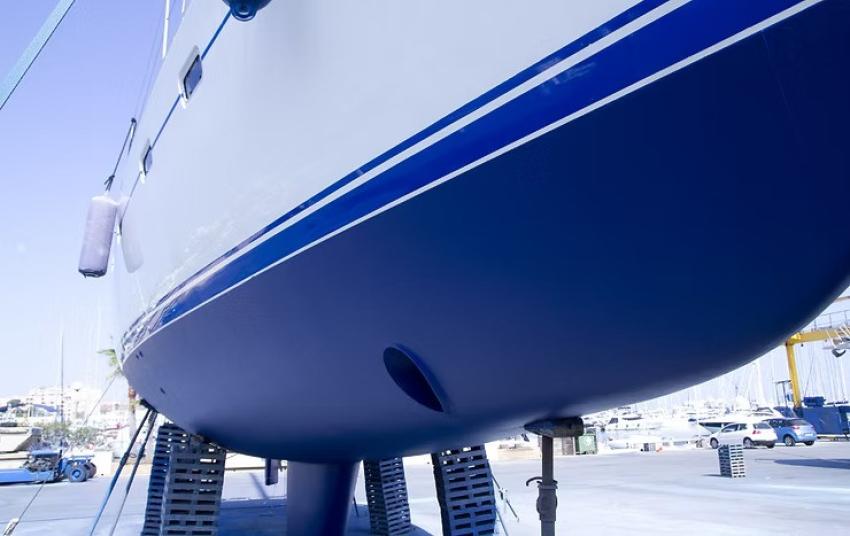
Industrial paints represent a critical component in manufacturing, construction, and maintenance sectors worldwide. These specialised coatings serve functions far beyond mere decoration, offering essential protection and performance enhancement for various surfaces and structures. From metal fabrication to concrete flooring, industrial paints address specific challenges faced in demanding environments like factories, bridges, marine vessels, and chemical processing facilities.
The formulation of industrial paints differs significantly from standard decorative options, containing advanced polymers, resins, and additives that enhance their functional properties. These components work together to create coatings that withstand extreme conditions, resist chemicals, prevent corrosion, and maintain structural integrity. According to industry experts at Seacraft Paints, selecting the right industrial paint can dramatically extend asset lifespan and improve operational efficiency across numerous applications.
Durability and Longevity
Industrial paints excel in providing exceptional durability under conditions that would quickly degrade standard paints. These formulations withstand constant exposure to UV radiation, temperature fluctuations, and physical impact without cracking, peeling, or fading. Many industrial coatings maintain their protective properties for 10-15 years or more, dramatically outlasting conventional paints that might need replacement after just 2-3 years in similar environments.
This extended lifespan stems from advanced chemical engineering that creates stronger molecular bonds within the paint structure. Epoxy-based industrial paints, for instance, form cross-linked polymer networks that resist abrasion and chemical attack, while polyurethane finishes offer superior flexibility to accommodate substrate movement without cracking. The incorporation of ceramic microspheres and other cutting-edge additives further enhances wear resistance, allowing coated surfaces to endure daily industrial operations without showing signs of deterioration.
Protection Against Corrosion and Weathering
Corrosion represents one of the most significant threats to industrial infrastructure, costing global industries billions annually in repairs and replacement. Industrial paints provide an essential barrier that prevents moisture, oxygen, salt, and other corrosive elements from contacting vulnerable surfaces. Zinc-rich primers, for example, offer both barrier and galvanic protection for steel structures, sacrificially corroding to protect the underlying metal even if the coating becomes damaged.
Weather resistance represents another crucial benefit of industrial paints, particularly for outdoor applications. These formulations contain UV stabilisers and specialised pigments that prevent ultraviolet degradation, while their superior adhesion properties ensure they remain bonded to substrates despite thermal cycling, precipitation, and wind exposure. According to the National Association of Corrosion Engineers, properly selected and applied industrial coatings can extend asset life spans by 15-20 years in aggressive environments, providing enormous return on investment through avoided replacement costs and downtime.
Aesthetic and Brand Identity Benefits
While functional benefits often take precedence, the aesthetic advantages of industrial paints should not be underestimated. Modern industrial coatings come in virtually unlimited colour options, allowing companies to maintain a consistent brand identity across facilities, equipment, and products. This visual uniformity contributes to professional appearance and brand recognition, particularly important for customer-facing operations.
Beyond basic colouration, industrial paints offer varying finish options—from high-gloss to matte—and can incorporate textural elements that enhance both appearance and functionality. Reflective coatings improve visibility and safety in work environments, while custom finishes allow organisations to create distinctive looks that set them apart from competitors. The colour stability of high-quality industrial paints ensures these aesthetic benefits persist for years without fading or discolouration, maintaining a fresh, well-maintained appearance that positively impacts both employee morale and customer perception.
Cost-Effectiveness and Maintenance Reduction
The initial investment in high-quality industrial paints typically yields substantial cost savings over time. By extending maintenance intervals and reducing the frequency of complete repainting, these products minimise disruption to operations and lower long-term expenditure on materials and labour. In manufacturing settings, production lines coated with appropriate industrial paints require fewer shutdowns for maintenance, directly improving productivity and profitability.
Maintenance reduction extends beyond the coating itself to the protected structures and equipment. By preventing corrosion and degradation of expensive assets, industrial paints preserve capital investments and defer replacement costs. Self-cleaning formulations with hydrophobic properties reduce dirt accumulation and simplify cleaning processes, while antifouling marine coatings reduce drag on vessel hulls, decreasing fuel consumption by up to 6% according to industry studies. These cumulative economic benefits make industrial paints a financially sound investment rather than merely an operational expense.
Environmental and Safety Advantages
Environmental considerations have driven significant innovation in industrial paint formulations. Modern water-based and high-solids options dramatically reduce volatile organic compound (VOC) emissions compared to traditional solvent-based alternatives, improving air quality and reducing environmental impact. These eco-friendly formulations comply with increasingly strict regulations while maintaining or even enhancing performance characteristics.
Safety benefits extend to both application and service life. Intumescent coatings provide passive fire protection by expanding when exposed to heat, insulating structural components and increasing evacuation time during fires. Anti-slip additives incorporated into floor coatings reduce workplace accidents, while antimicrobial formulations prevent bacterial growth in food processing facilities and healthcare settings. These safety enhancements protect both physical assets and human lives, making industrial paints an essential component of comprehensive safety protocols in commercial and industrial environments.
In conclusion, industrial paints deliver multifaceted benefits that extend far beyond simple decoration. Their contributions to asset protection, operational efficiency, aesthetic consistency, cost reduction, and environmental safety make them indispensable in modern industrial applications. By selecting appropriate industrial coatings for specific environments and purposes, organisations can significantly enhance both the longevity and performance of their physical infrastructure while managing maintenance costs and environmental impact.



